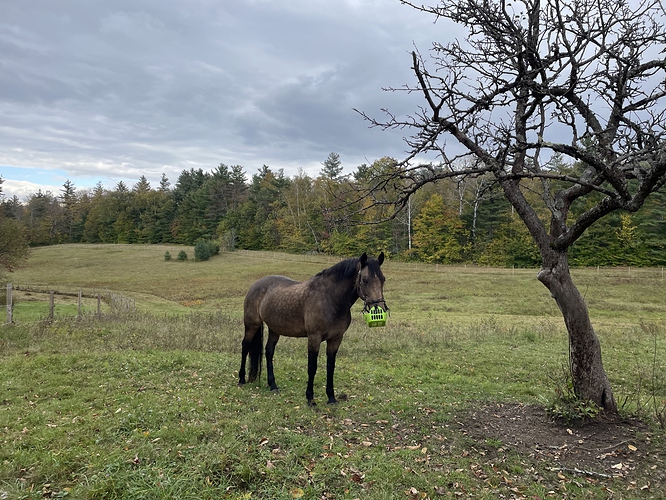Hello,
I recently got my wonder horse back. She’s elderly, and foundered 8 months ago. I am trying to understand what that means now regarding her care.
I understand that there are many different causes for founder, and I am not sure which one hers is. I am guessing because she’s older it was a blood sugar thing from too much grass, but it could have been too much grain, a fever, a colic, etc. I know that each of these causes has a different set of after care required to fix the root of the problem. When it happened she was tested for cushings but it came back negative, but I understand the test for it is awfully unreliable.
She is in a hogfuel pen right now, but my barn owner wants to make a paddock for her because she cant stay in that pen long term, it belongs to the cows. She’s there quarantining. The owner wants to make her a paddock by mowing down a space in the grassy field they have(and taking the cut stuff out). Would that still leave too much grass? Or am I being paranoid? I hear as grass grows back it’s the sweetest, which if her founder was due to sugar could be detrimental. Is that true? Is a mowed down paddock that’s already been eaten down work at all or do I need to find her another barn where she can be away from grass? How much grass is too much, like how careful do I have to be exactly. If she pulls me over and grabs a bite of grass when walking her would that be enough to trigger another episode? Im relying on my vet to help explain a lot of this stuff but I’m stressing about it. The vet comes on Monday.
Will she ever be allowed to be turned out on grass? If it were introduced extremely slowly say next summer would she be allowed it? I’m not sure if horses go “back to normal” after a certain amount of time with medications and time. I guess that has to do with what caused it in the first place.
I have put her on a small scoop(it’s a small beer mug, maybe 2 cups) of 12% pellets so I could whomp in some supplements (magnesium, willow, vitamins (all in one)) twice a day. Is that too much grain? I emailed my vet but didnt get very clear answers back- they want to see her in person, and I understand that. I was thinking switching her to something with rice bran in it might be nice for her weight- she’s a skinny thing right now.
Sorry for the scattered thoughts. I have never dealt with founder in all my 30 years in the horse world, so all I know are the very very basics, and I might not even have those right.
Thanks




